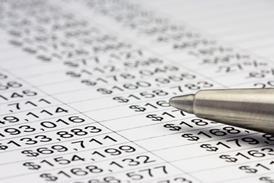Obtaining access to a simple database is a steep uphill ride.
What largely preventable crime costs us over £1bn a year, is increasing in frequency, yet is treated pretty much as a joke by everyone except the victim?
You'll have guessed from the headline that I'm talking about bicycle theft: more than half a million bikes are stolen every year and only about 4% are recovered and returned to the owner.
The direct cost of theft is around £140m a year. When you add in wider costs such as dealing with insurance claims and the environmental cost of victims giving up cycling, we're talking about a bill of close to £1bn to society.
Bucking most crime trends, the toll seems to be increasing, with the number of bikes stolen up by 15% in the past five years.
So, how is this 'largely preventable'? Mainly, by taking it seriously.
With physical security, we've seen some progress, with half-decent bike racks in high-risk locations such as railway stations and universities (though we could do with a lot more, notably in London's legal quarter).
What we're not doing yet is attacking the crime the way we do with thefts of other high-value portable items, by reducing their saleability as stolen goods.
This should be relatively easy, as modern bikes come with a number stamped on to bottom of the frame: if there was an easy way to check frame numbers against a database of stolen numbers, hot bikes would be more difficult to shift second hand.
One such clearing house is already available, a website stolen-bikes.co.uk on which bereft owners can post details. It currently lists well over 1,000. The site's founder, John Moss, has just won a national open data award for a new one-stop website Check That Bike, on which anyone looking at a second hand bike can enter its frame number to see if it has a history.
What Moss really wants is to take suspect frame numbers from police force databases.
Predictably, he is getting nowhere. Incredibly, he has also discovered that there is little or no routine sharing of data about stolen bikes between police forces, so all professional gangs need to do is to move them by the vanload a few miles to be at little or no risk of getting caught.
This is the basis of my charge that the crime is not being taken seriously.
This bothers me partly because I'm a cyclist (and regular victim of professional thieves) and partly because it is symptomatic of a wider problem, of persuading the criminal justice sector to release useful data. The default position is always no.
I sit on a body called the Crime and Justice Sector Transparency Panel which is trying to encourage a change in climate across the whole sector. It is an uphill struggle: I have written here previously about the difficulty of getting magistrates' court listings published. Among other things, the panel is also interested in county court judgments, crime maps and stolen motor vehicle details.
In this campaign, you would have thought the wider dissemination of frame numbers of stolen bikes would be fairly low hanging fruit, but apparently not. Moss tells me he is close to a breakthrough with one force, but that leaves 42 to go, in England and Wales.
While we're waiting, all I can advise cyclists is: turn your bike over, snap the frame number - it'll be on the bottom bracket, under the pedals - with your mobile phone, and email it to yourself. One day you'll need it.
Michael Cross is Gazette news editor



























11 Readers' comments